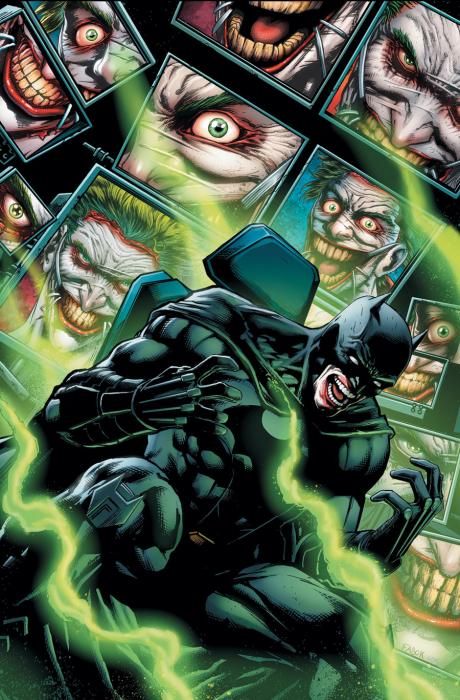By this point, I think most "Batman" readers are familiar with how the "Death of the Family" tie-in comics are structured; a character connected to Batman is targeted by the Joker and hijinks ensue. I think that's why "Detective Comics" #16 immediately stands out among the crowd, as John Layman and Jason Fabok buck the trend and go for an entirely different routine. Even better, it's in a manner that continues Layman's plots in "Detective Comics" up until this point.
By focusing on the Smile Gang and other groups inspired by the Joker, readers get a look into the idea that living in a city like Gotham would inevitably influence copycats. With the return of the Joker after a year's absence, having these groups as an additional problem running rampant through the city makes perfect sense. What's especially nice is that it's an idea that Layman has picked up from Tony S. Daniel's early issues of "Detective Comics" and then run with in a way that leaves his own stamp on the concept; it gives a certain level of continuity from previous issues but also hasn't firmly locked Layman into someone else's route for the title.
This idea works in no small part thanks to Layman not only looking at the big picture, but the smaller details. The focus on the Smile Gang's new member Torch gives a better idea of what makes these people tick, even as it serves as a reminder of just how lost and confused they are in a way that makes it hard to sympathize with them. There's also a good story structure, with the bad guys taking advantage of the chaos in Gotham to their advantage. It's something that is too-often lacking in superhero comics, where the villains are defeated not because the hero is smart but because the bad guys are dumb. That's not the case here.
Then again, it's that idea that the villains need to be smart that makes the latest back-up story involving Emperor Penguin so enthralling. Batman himself isn't in it, but his presence is felt as Oglivy continues his attempt to become one of the new major players in the Gotham underground. It's an enthralling story -- in some ways even more interesting than the main feature -- and for such a new character I feel like Layman's let us understand Oglivy inside out quite well. Part of the attraction here is that once again, this is a smart character. The fact that Layman's synced this up to fit in with the current events in "Detective Comics" makes it all the more fun, but regardless it's well worth your time, too. This is anything but a throw-away story.
Both Fabok and Andy Clarke turn in some strong art, too. Fabok continues to impress me with some clean, crisp lines. It's easy to follow, and he's able to take this style and "clutter" it up when necessary (like during a particularly drenching storm) without ever making it feel unintentionally overly full. He's been just as smart a choice for the new "Detective Comics" creative team as Layman, and I'm glad to see him doing so well on the title. Clarke's art is unsurprisingly excellent as ever; his tiny, precise lines are just beautiful, and he's able to balance detail with an open panel layout so that it never feels cramped or like we're getting too much. Another unsurprisingly excellent effort from Clarke.
"Detective Comics" these four months have jumped into a must-read category, and this issue is no exception. Hopefully those who might not have wised to how good the new Layman and Fabok creative team are will use this tie-in issue to see the error of their ways. If you aren't reading "Detective Comics" but like Batman, do check this issue out. You won't be disappointed.

